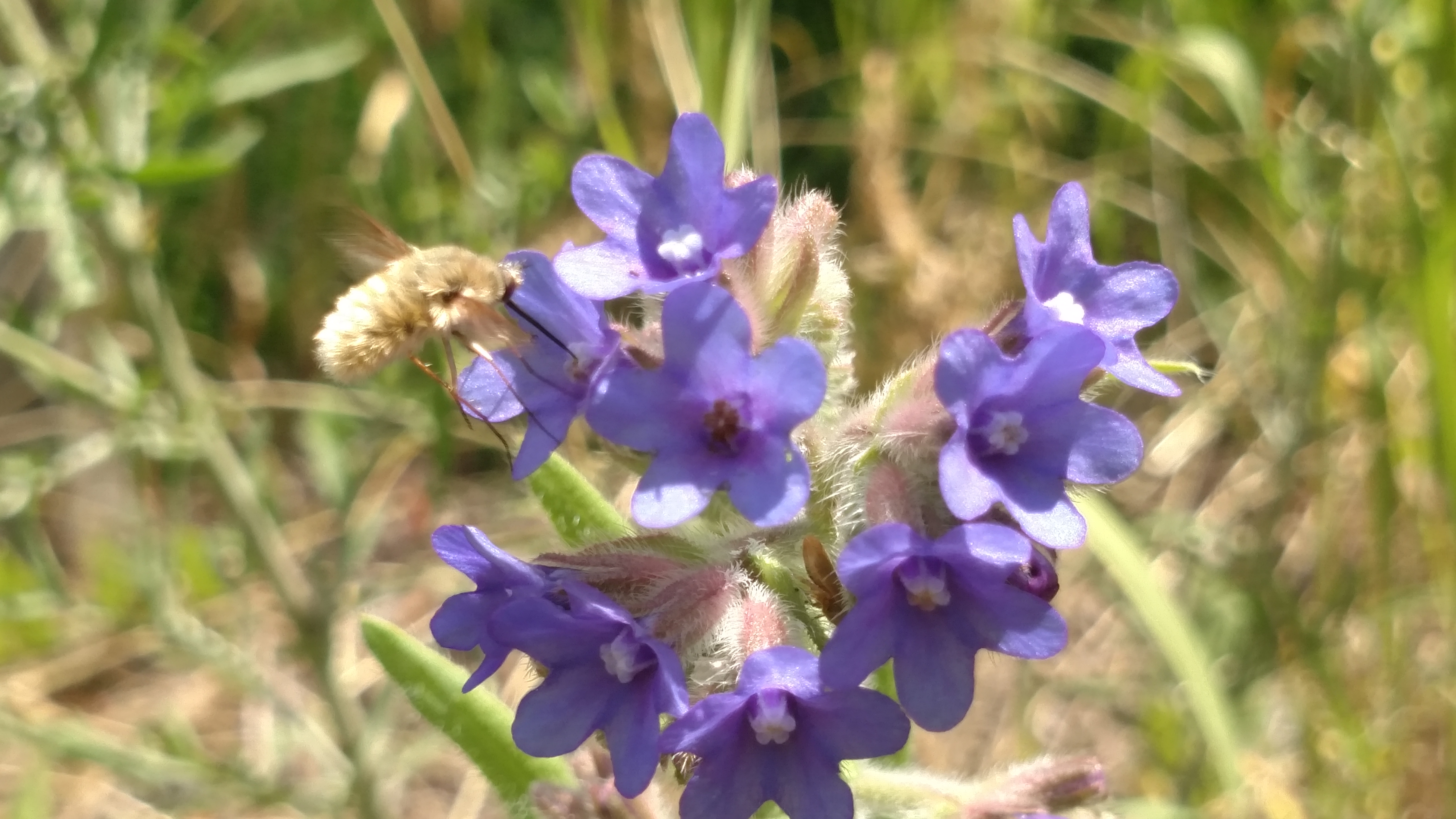Color Challenge - Saturday Indigo - Bee Fly on Common Bugloss - Anchusa officinalis L.
Bee Fly on Common Bugloss - Anchusa officinalis L.
Common Bugloss has been growing on the outskirts of the farm for years. Over time I have had the animals grazing areas that the Bugloss have grown which has helped to limit its spread. I like to leave certain stands of the weed since it a major supplier of food for the bees, amongst the various other weeds that I leave for them.
The Large Bee Fly is a bee mimic that is an extremely good pollinator. The female drops or flicks its eggs into the tunnels of solitary bees and wasps which then find their way to the nest and then feed on the grubs, larvae, and food stores.

Common Bugloss is listed as a Class B noxious weed in Spokane County. The definition for Class B noxious weeds is:
CLASS B WEEDS
In areas where Class B weeds are abundant, control is decided at the local level, containment is the primary goal. The following weeds are growing wild in Spokane County and are mandated for control:
Common Name Scientific Name
Blueweed - Echium vulgare
Common Bugloss - Anchusa officinalis
Dalmatian Toadflax - Linaria dalmatica
Hawkweed, Orange - Hieracium aurantiacum
Hawkweed, Yellow-flowered H. (Meadow subgenus)
Knapweed, Diffuse - Centaurea diffusa
Knapweed, Spotted - Centaurea stoebe
Kochia - Kochia scoparia
Leafy Spurge - Euphorbia esula
Purple Loosestrife - Lythrum salicaria
Rush Skeletonweed - Chondrilla juncea
Thistle, Musk - Carduus nutans
Thistle, Scotch- Onopordum acanthium
Source

Check out my blog @flemingfarm

Fleming Family Farm
FLEMING FAMILY FARM, LLC
Sustainable & Organic Methods | Heirloom Produce
All images are original works of Fleming Family Farm unless otherwise notated and credited.
If you find this post useful or entertaining, your support is greatly appreciated by upvoting, resteeming, & following!


Join the SteemitHomesteaders Slack Channel! Image is Invite Link.


Nice folwer, i follow you.
feel free to visit my indigo photo:
https://steemit.com/colorchallenge/@keybelle/colorchallenge-today-indigo-butterfly
Love the beeflys! In Italy i cought one just to look at it and then release it.
I'm always too busy taking pictures to try and catch them. But I have seriously been curious about the feeling of them in my hand. Are they like a grasshopper or more like a fly in their attempts to escape from the grasp?
So hard to catch a good photo of pollinators. Good job. We have hoverflys in KY. They resemble bees a well.
I'm pretty sure Bombylius genus covers a 100 plus varieties so they are likely related if not he same genus.